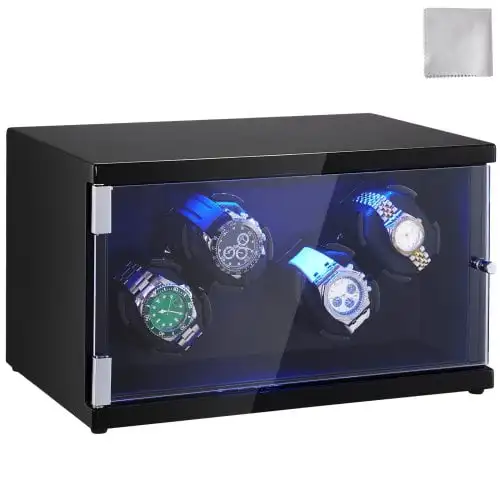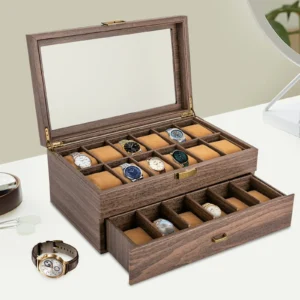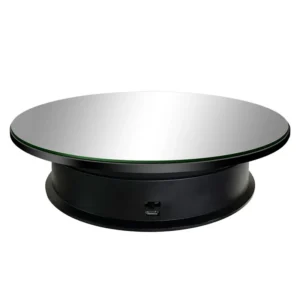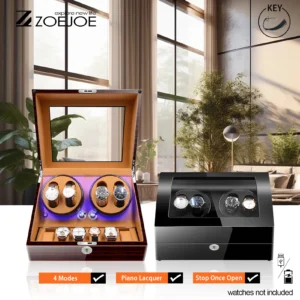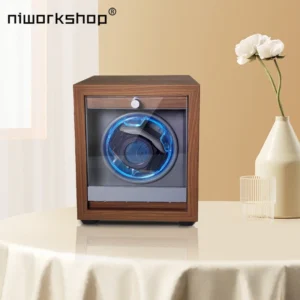Introduction: Understanding Rotating Watch Display Systems
A rotating watch display system is more than just a fancy gadget for timepiece enthusiasts—it’s an essential tool that serves dual purposes of functionality and presentation. These systems come in two main varieties: watch winders that keep automatic watches running by mimicking wrist movement, and pure display turntables that showcase your collection in dynamic rotation.
For collectors and retailers alike, rotating display systems offer significant advantages:
- They maintain the accuracy and functionality of automatic watches
- They create an eye-catching presentation that highlights the beauty of timepieces
- They provide organization and protection from environmental factors
- They allow for better appreciation of design details through continuous movement
The gentle, consistent motion of these systems keeps automatic watch mechanisms properly lubricated and functioning, while simultaneously creating a captivating visual display that enhances any collection. Understanding these watch display fundamentals helps collectors make informed decisions about preserving their investments.
Whether you’re a serious collector with dozens of automatic timepieces or someone looking to showcase a few special watches, various rotating watch holder options can accommodate your specific needs while adding a touch of sophistication to your space.
How Rotating Watch Display Systems Benefit Your Collection
The advantages of incorporating rotating display systems into your watch collection strategy extend far beyond simple aesthetics. For automatic watches specifically, these systems provide crucial mechanical benefits that preserve both function and value.
Automatic watches rely on regular movement to maintain proper operation. Without it, internal lubricants can settle and harden, potentially causing damage to delicate components. A quality rotating system ensures:
- Continuous and proper lubrication distribution throughout the movement
- Prevention of component stiffness from extended periods of inactivity
- Maintenance of timekeeping accuracy by keeping the mainspring optimally wound
- Extended lifespan for valuable timepieces through proper care
Beyond the functional aspects, the decorative watch display advantages are equally significant. Unlike static displays that offer only a single viewing angle, rotating systems create a dynamic presentation that captures attention and showcases every detail of your timepieces. Museums and luxury retailers have long utilized this approach to highlight exceptional craftsmanship.
For collectors with multiple automatic watches, a rotating system solves the practical challenge of keeping all pieces ready to wear. Rather than manually winding each watch or setting the time after periods of inactivity, high-quality watch winders keep your entire collection in ready-to-wear condition while providing elegant display options that complement your home décor.
Types of Watch Winders and Their Functionality
Understanding the technical aspects of watch winder mechanisms helps collectors make informed decisions that protect their timepieces. At the heart of every quality winder is the rotation system, which must accurately mimic natural wrist movement.
Turns Per Day (TPD)
The most critical specification for any watch winder is its TPD setting—the number of complete rotations it performs in a 24-hour period. Different watch movements require different TPD ranges:
- Basic automatic movements typically require 650-800 TPD
- High-end Swiss movements often need 800-1,000 TPD
- Complex movements with perpetual calendars may need 1,000+ TPD
Quality winders offer adjustable TPD settings to accommodate various watch types within your collection.
Rotation Directions
Watch winders offer different directional capabilities to match specific movement requirements:
- Clockwise rotation: Meets the needs of watches designed to wind in one direction
- Counter-clockwise rotation: Required for oppositely designed movements
- Bidirectional rotation: Universal option that accommodates most automatic watches by alternating between both directions
Adjusting watch winder movements correctly for each timepiece ensures optimal winding without unnecessary strain on the movement.
Programmable vs. Fixed Systems
Advanced winders feature programmable rotation patterns that include active winding periods followed by rest intervals. This intermittent winding more accurately represents natural wear patterns and prevents potential overwinding. Fixed systems offer less customization but provide simplicity and reliability for less demanding collections.
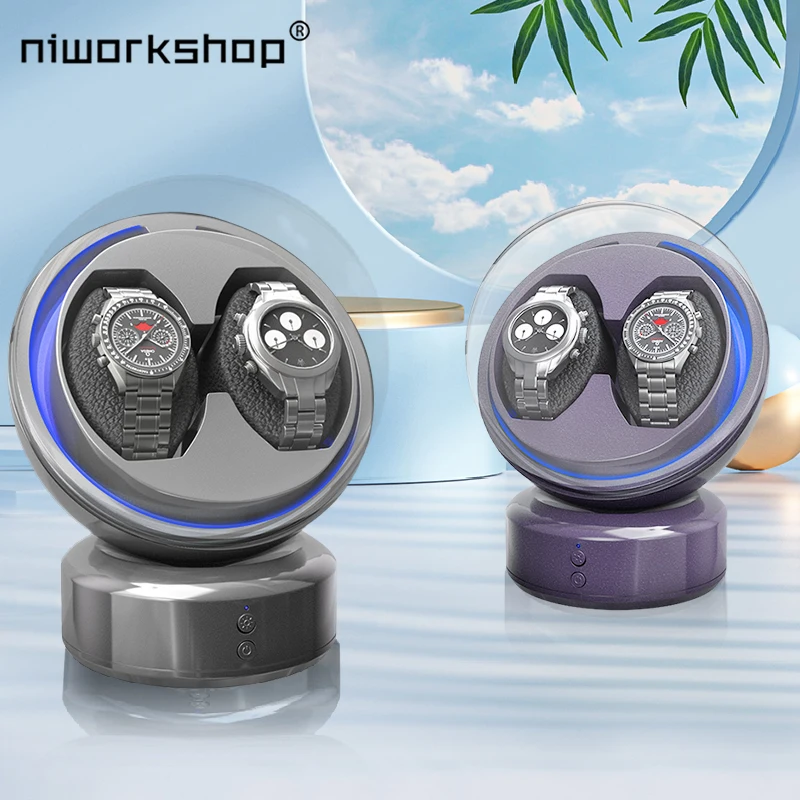
The best automatic watch winder systems incorporate silent motors that operate below audible threshold, making them suitable for bedrooms and quiet spaces without creating disturbance.
Categories of Rotating Watch Display Systems by Capacity
The capacity of your display system should align with both your current collection and anticipated growth. Options range from single-piece displays to elaborate multi-watch cabinets.
Single Watch Winders
Compact and focused, single watch winders offer dedicated care for your most precious timepiece. These units typically occupy minimal space on a dresser or desk while providing precise winding parameters for a specific watch. They’re ideal for daily wear rotations or showcasing a prized piece.
Double Watch Displays
Paired presentations accommodate couples who each have a signature timepiece or collectors who rotate between two daily watches. These systems often feature independent winding mechanisms, allowing different settings for each watch position.
Multi-Watch Systems
As collections grow, multi-watch systems become more practical and economical. Available in configurations for 4, 6, 8, 12 or more pieces, these systems optimize space while providing individualized care for each timepiece. Many collectors find that a 4-6 watch system represents the ideal balance between capacity and footprint for home use.
Watch Winder Cabinets and Safes
For substantial collections, integrated cabinets combine winding functionality with security features. These furniture-grade pieces offer protection through locking mechanisms while accommodating dozens of timepieces in a visually impressive display.
Many collectors begin with smaller systems and gradually expand to larger watch display cases as their collections grow. Understanding your long-term collecting goals helps determine the most appropriate capacity for your needs.
Design Styles and Form Factors
The aesthetic impact of your display system is nearly as important as its functional capabilities, especially when positioned in visible living spaces. Several distinct design approaches cater to different interior styles and presentation preferences.
Desktop Watch Winder Boxes
Compact and elegant, desktop models typically feature fine wooden construction with glass viewing panels. These self-contained units protect watches from dust while displaying them through transparent panels. Their smaller footprint makes them suitable for nightstands, dressers, or office desks.
Pedestal/Stand-Alone Display Systems
Creating a more dramatic presentation, pedestal displays elevate watches to eye level and often feature 360-degree visibility. These statement pieces draw attention to the collection and work particularly well in spaces dedicated to hobbies or collections.
Cabinet/Showcase Style Displays
Furniture-grade display cabinets integrate seamlessly into home décor while providing substantial capacity. These larger installations often include additional storage for watch accessories, documentation, or tools. Built with fine hardwoods and quality hardware, these substantial pieces represent significant investments.
Open Turntable Displays
Inspired by retail presentations, open turntable systems maximize visibility with minimal visual obstruction. These contemporary options often feature acrylic components and dramatic lighting that creates a museum-like presentation.
Understanding watch display terminology helps collectors communicate their preferences when exploring different watch display holders and comparing features across various models.
Materials and Construction Quality
The materials used in rotating watch systems directly impact both protection and presentation quality. Premium construction not only enhances appearance but also ensures proper functioning and longevity of the system itself.
Exterior Materials
High-quality exterior materials provide both aesthetic appeal and functional durability:
- Hardwoods (walnut, mahogany, oak, cherry): Offer traditional elegance and excellent stability
- Leather wrapping: Provides sophisticated texture and padded protection
- Carbon fiber: Creates a contemporary, technical appearance suitable for modern watches
- Acrylic/glass: Maximizes visibility while protecting from dust and handling
- Metals (aluminum, stainless steel): Add industrial sophistication and structural strength
Interior Components
The interior materials that directly contact your watches deserve equal consideration:
- Watch pillows: Flexible yet supportive cushioning that secures watches without strain
- Lining materials: Soft suede, velvet, or microfiber that prevent scratching
- Motor mounts: Vibration-dampening designs that ensure silent operation
- Closure mechanisms: Precision-fitted hinges and clasps that prevent dust infiltration
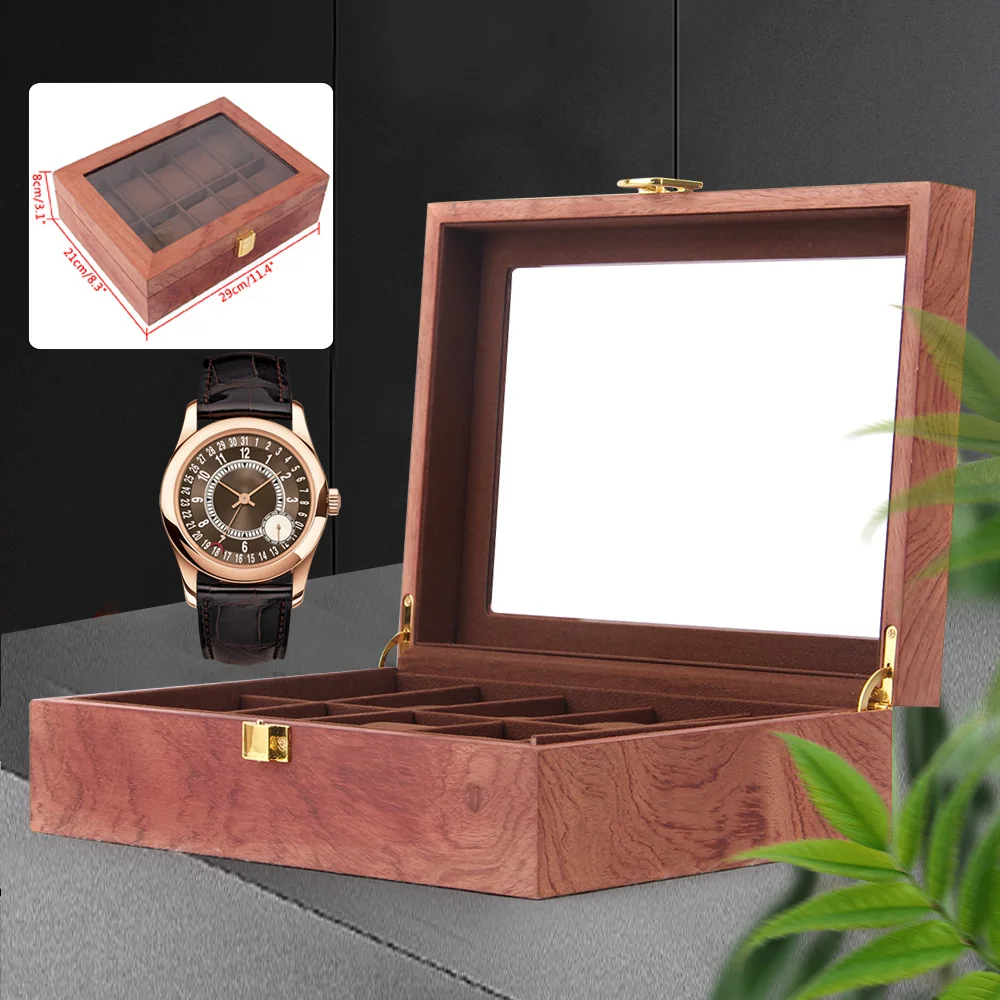
Premium wooden watch holders combine traditional craftsmanship with modern functionality. The weight of the unit often indicates construction quality—substantial pieces with solid materials typically outperform lightweight alternatives in terms of stability, noise reduction, and durability.
Essential Features to Consider
Beyond basic rotation functionality, several key features differentiate premium systems from basic models. These capabilities enhance both user experience and timepiece protection.
Motor Quality and Noise Levels
The motor is the heart of any rotating system. Premium units feature:
– Japanese motors rated for continuous operation
– Sound dampening below 10 decibels (quieter than a whisper)
– Balanced rotation mechanisms that prevent jerking movements
– Consistent rotation speed regardless of load
Understanding watch winder motor power helps collectors evaluate quality differences between competing products.
Power Source Options
Different power arrangements offer varying convenience and placement flexibility:
– AC adapters: Provide consistent power but require proximity to outlets
– Battery operation: Enables placement anywhere but requires periodic replacement
– USB power: Offers modern convenience and potential integration with smart systems
– Hybrid systems: Combine battery backup with standard power for uninterrupted operation
Programmability Options
Advanced control systems enhance customization:
– Adjustable TPD (Turns Per Day) settings
– Directional control (clockwise, counterclockwise, bidirectional)
– Timing programs with rest periods
– Individual control for each watch position in multi-watch systems
Security and Protection Features
Quality systems incorporate protective elements:
– Locking glass covers that prevent unauthorized access
– UV-resistant materials that prevent dial fading
– Anti-magnetization shielding for sensitive watch movements
– LED lighting systems that highlight watches without generating heat
The best displays balance these technical features with intuitive operation that doesn’t require complex programming for daily use.
Buying Guide: How to Choose the Right System
Selecting the ideal rotating display system requires careful consideration of your specific collection needs and future growth plans. This systematic approach helps narrow your options effectively.
Step 1: Assess Your Collection
Begin by evaluating your current watches and anticipated acquisitions:
– Count how many automatic watches require winding
– Note any watches with special winding requirements
– Consider how frequently you rotate between timepieces
– Project reasonable collection growth over 3-5 years
Step 2: Determine Primary Purpose
Clarify your main objective:
– Pure functionality for maintaining automatic watches
– Display emphasis for showcasing your collection
– Balanced approach with both winding and presentation
Step 3: Research Watch-Specific Requirements
Different watch brands and movements have specific winding needs:
– Consult manufacturer documentation for TPD recommendations
– Identify directional requirements (clockwise, counterclockwise, bidirectional)
– Note any watches with specialized winding concerns
Step 4: Evaluate Space Considerations
Measure your intended placement area:
– Horizontal surface dimensions for desktop units
– Vertical clearance for cabinet-style options
– Visibility considerations from typical viewing angles
– Proximity to power sources if not battery-operated
Comparing watch display stands vs display boxes helps determine which form factor best suits your space constraints and aesthetic preferences.
Step 5: Establish Budget Parameters
Quality systems range widely in price:
– Entry-level functional winders: $100-300
– Mid-range quality systems: $300-800
– Premium multi-watch displays: $800-2,500
– Custom luxury cabinets: $2,500+
Investing in quality typically provides better motor reliability, quieter operation, and superior construction that protects valuable timepieces.
Top Recommendations by Category
Based on performance, build quality, and value, certain rotating display systems stand out in their respective categories. These recommendations represent excellent options for different collector needs and budgets.
Single Watch Winders
The best individual winders combine precise function with elegant presentation. Look for models featuring:
– Adjustable TPD settings (500-1,200 turns)
– Multiple directional options
– Truly silent operation
– Quality materials like real wood or carbon fiber
– Compact footprint under 6 inches square
Multi-Watch Systems for Collectors
For growing collections, versatile multi-watch winders provide excellent value. Superior options include:
– Independent control for each watch position
– Modular designs that can expand as collections grow
– Mixed storage with both winding and static positions
– Protective glass covering with secure closure
Luxury Options
Luxury watch winders represent the pinnacle of both function and presentation. These premium systems feature:
– Furniture-grade construction with exceptional materials
– Precision engineering for absolutely silent operation
– Sophisticated programming capabilities
– Enhanced security features
– Distinctive design elements that complement fine watches
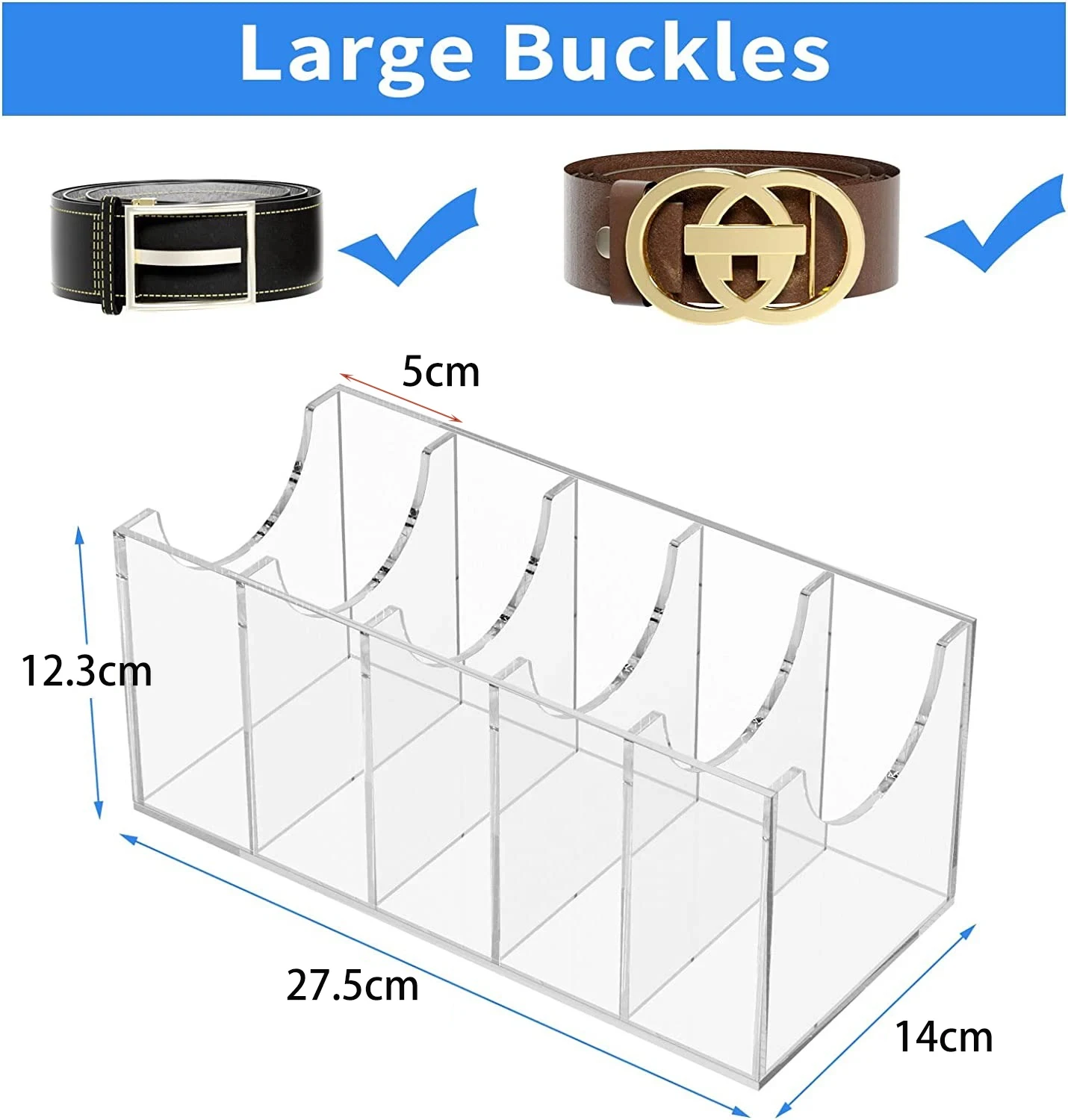
Value-Focused Recommendations
Quality options exist even for budget-conscious collectors. The best value models deliver:
– Reliable basic functionality without unnecessary features
– Durable construction that may sacrifice some aesthetic refinement
– Straightforward controls without complex programming
– Proper watch protection despite lower price points
Watch Accessories, Watch Holder
$94.51 Select options This product has multiple variants. The options may be chosen on the product pageMen's Watch Organizer, Watch Display Case, Watch Organizer
Price range: $112.68 through $169.45 Select options This product has multiple variants. The options may be chosen on the product pageAutomatic Watch Winder, Luxury Watch Winder, Single Watch Box
$307.39 Select options This product has multiple variants. The options may be chosen on the product pageRotating Watch Holder, Watch Holder
Price range: $93.28 through $93.35 Select options This product has multiple variants. The options may be chosen on the product page4 Watch Winder, 6 Watch Box, Automatic Watch Winder
$512.31 Select options This product has multiple variants. The options may be chosen on the product pageAutomatic Watch Winder, Single Watch Winder, Wooden Watch Holder
$201.76 Select options This product has multiple variants. The options may be chosen on the product page
When selecting any system, prioritize the quality of the winding mechanism over superficial features, as this directly impacts the care your watches receive.
Proper Use and Maintenance
Correct operation and regular maintenance ensure your rotating display system performs optimally for years. Following these best practices protects both the system and your valuable timepieces.
Correct Watch Placement
Proper positioning within winders is essential:
– Center watches on cushions without stretching bracelets
– Secure without excessive compression
– Ensure crowns are not pressed against cushioning
– Position with appropriate clearance from other watches
Cleaning and Maintenance
Regular care preserves both appearance and function:
– Dust wooden surfaces with microfiber cloths only
– Clean glass components with ammonia-free cleaners
– Use compressed air to remove dust from mechanisms
– Avoid liquid cleaners near motor components
– Periodically check and tighten any exposed fasteners
Optimal Placement in Living Spaces
Environmental factors affect both watches and display systems:
– Avoid direct sunlight which can fade dials and damage movements
– Maintain consistent room temperature between 65-75°F
– Keep away from sources of vibration
– Position away from heating/cooling vents
– Ensure adequate air circulation around unit
For ongoing issues, consulting resources for troubleshooting common watch winder problems can help resolve most challenges before they affect your timepieces.
Frequently Asked Questions
Is a watch winder necessary for automatic watches?
While not absolutely necessary, watch winders provide significant benefits for automatic watch owners who don’t wear each watch daily. Without regular movement, automatic watches stop running and require resetting when returned to use. Additionally, keeping movements active helps maintain proper lubrication distribution within the mechanism.
Can a watch winder damage my timepiece?
A quality winder with proper settings will not damage your watch. Modern automatic watches are designed with slipping mechanisms that prevent overwinding. However, using incorrect TPD settings or low-quality winders with jerky movements could potentially cause unnecessary wear over time.
How do I determine the correct TPD for my watch?
The best source for TPD information is the watch manufacturer’s documentation. Most common automatic movements require between 650-950 turns per day. For specific guidance, understanding TPD watch winders provides detailed information for popular movement types.
Are these systems safe from magnetizing watches?
Quality watch winders use shielded motors designed to minimize magnetic fields. Better systems incorporate additional magnetic shielding between the motor and watch compartment. While most modern watches have improved anti-magnetic properties, positioning vintage watches directly against the motor compartment should be avoided.
Can I use rotating displays for quartz watches?
Absolutely! While quartz watches don’t require winding, rotating displays still provide excellent presentation benefits. Many collectors use display-only rotation systems specifically for their quartz pieces to create dynamic presentations without winding functionality.
How long should a watch winder run each day?
Most quality winders incorporate programming that alternates between active winding periods and rest intervals. This intermittent operation more closely mimics natural wearing patterns and is ideal for automatic watches. Typically, 4-8 hours of actual rotation within a 24-hour period provides optimal winding.
Specialized Applications for Rotating Watch Displays
Beyond personal collection management, rotating displays serve several specialized purposes that highlight their versatility and value.
Photography and Content Creation
Dynamic displays significantly enhance watch photography by:
– Creating consistent movement for video capture
– Highlighting how light plays across different angles
– Facilitating 360-degree product views for online sales
– Enabling hands-free operation during detailed photography
Retail and Commercial Applications
Commercial environments leverage rotation to maximize impact:
– Drawing customer attention in retail environments
– Creating focal points within larger display cases
– Demonstrating movement qualities of specific watches
– Increasing perceived value through premium presentation
Museum and Exhibition Usage
Cultural institutions utilize rotation systems to:
– Showcase historical timepieces from multiple angles
– Demonstrate functional aspects of horological innovations
– Create interactive educational displays
– Maintain movement in antique timepieces requiring regular winding
Creating ultimate watch displays for any of these specialized applications requires careful attention to lighting, rotation speed, and environmental controls that protect valuable pieces while maximizing visual impact.
Understanding the Balance Between Winding and Rest
Contrary to some misconceptions, automatic watches benefit from cycles of activity and rest rather than continuous winding. Understanding this balance helps collectors optimize their winding systems.
The mainspring in an automatic watch is designed to store energy efficiently but not indefinitely. Quality rotating systems incorporate intermittent winding patterns that mimic natural wear patterns—periods of activity followed by rest. This approach:
- Prevents unnecessary tension on the mainspring
- More accurately simulates actual wearing conditions
- Reduces wear on automatic winding mechanisms
- Extends service intervals between maintenance
Most premium winders now feature programming that automatically implements these intervals, typically running for several hours before pausing for a rest period. This intelligent approach has largely eliminated concerns about overwinding that were more relevant with vintage timepieces.
For collectors with multiple watches in rotation, this balanced approach ensures each piece receives appropriate care while maximizing the lifespan of both the watches and the winding system itself.
At Daily Accents, we understand that proper watch storage and display represents an investment in preserving the value and enjoyment of fine timepieces. Selecting the right rotating display system ensures your collection receives the care it deserves while creating a presentation worthy of the craftsmanship it showcases.

